
Who will
remain
vulnerable
to the
increasing
heat?
Society
Climate change is already damaging the physical and mental health of everyone on Earth, with billions more at risk of extreme heat events. Many cities in Asia are approaching physiological, psycho-social adaptation limits or dangerous thermal thresholds. It is not just a matter of temperature as countries around the world present different types of vulnerabilities.
In countries like Brazil, India and Indonesia, the main vulnerabilities are related to socioeconomic disparities and the presence of large marginalized communities living in informal settlements. In European countries like Italy, the main source of vulnerability relates to health inequalities and the high share of elderly people. Heat exposure poses acute health risks particularly to people older than 65 years or to persons with pre-existing health conditions or fragilities, to people living in urban areas and individuals with little means to access cooling mechanisms. In both Europe and North America today the share of people over 69 years is above 10%, while in Asia and South America it represents just 5% of the regional population. Looking ahead at 2050, Giacomo Falchetta, researcher in climate economics, shows that these shares are expected to increase in all world regions, reaching 15% in Asia and South America, 20% in North America and 23% in Europe. Furthermore, in Europe, exposure to days above 37.5 degrees Celsius will increase by a stunning 250% while only by 80% in the other two regions.
Outdoor workers engaging in physical activities during extreme heat are also exposed to a greater risk for their health, and this is becoming an alarming concern globally. Power outages are also an understudied source of vulnerability that will cross the geographic boundaries of many countries. Weather extremes not only affect electricity demand, but can also undermine electricity supply and transmission. The energy demand peak induced by a heatwave can therefore coincide with reduced transmission and distribution capacity, further challenging the operation of electricity grids. Lack of indoor cooling is increasingly seen as an important dimension of energy poverty. The inability to pay for cooling electricity is a relevant dimension of energy poverty for those who can afford the appliance, but not the running costs. Analyzing 280 European cities, Marinella Davide, researcher in energy policy, found that rising energy prices can exacerbate the hockey-stick relationship between mortality rate and extreme temperatures. Although the price impact remained limited during the warm season so far, this can become a relevant problem in the future as extreme hot temperatures are expected to increase, along with the adoption of AC.
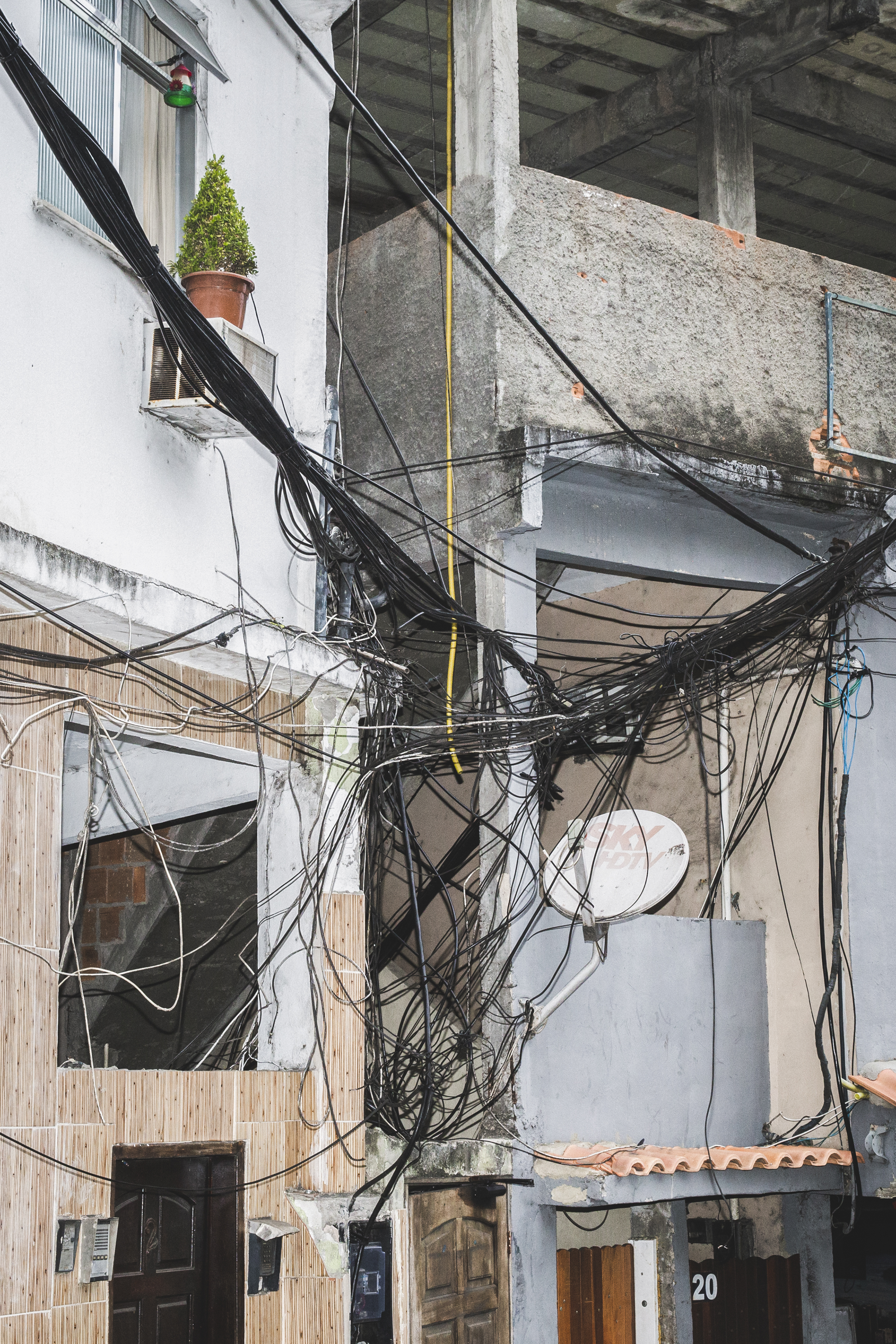
65% 25°C
Tangled cables - called “gatos" - divert electricity from the main grid in the Babilônia favela of Rio de Janeiro. Brazil, 2022
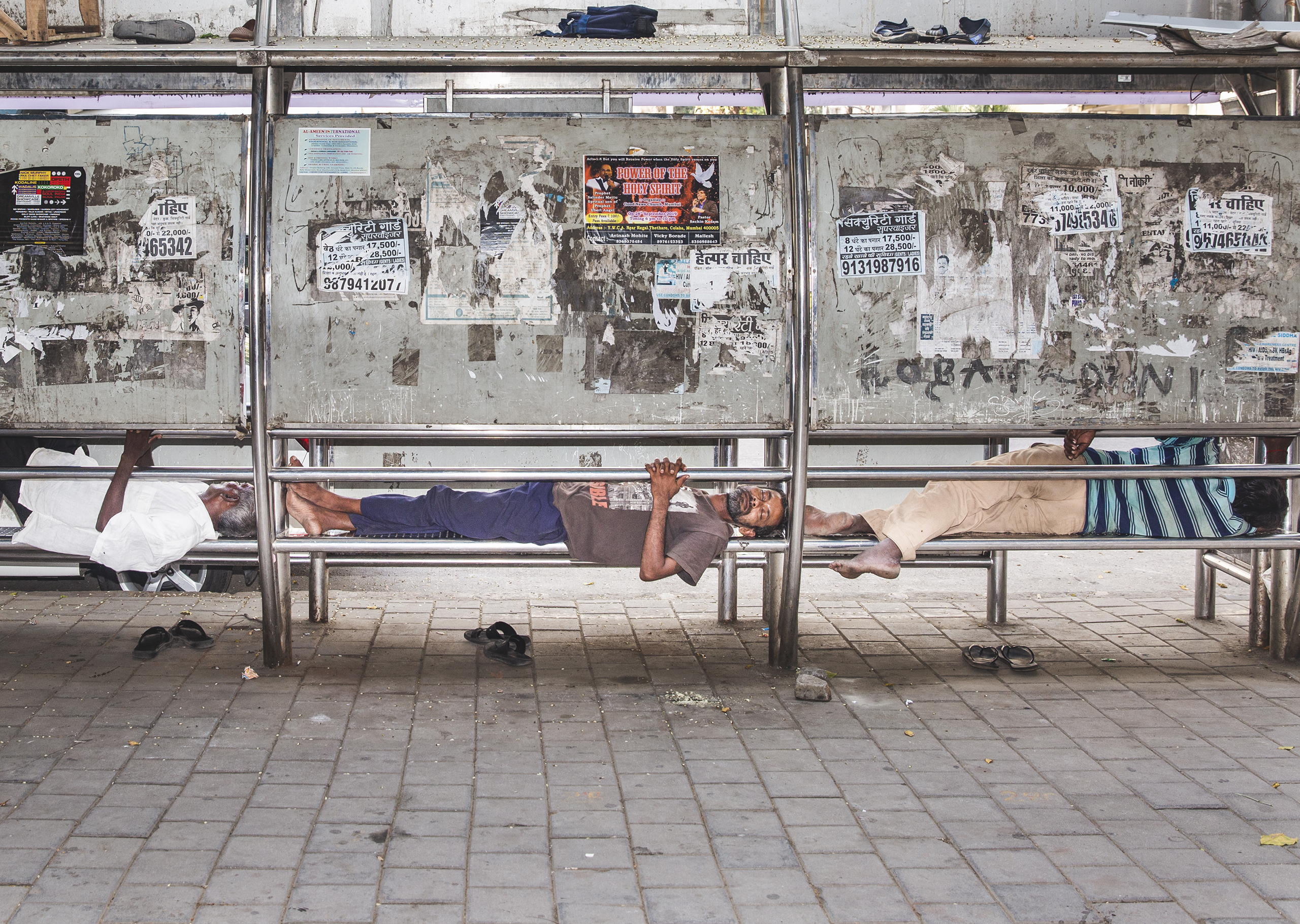
61% 30°C
Three men sleep on the bench of a bus stop in Churchgate, a wealthy neighborhood of Mumbai. India, 2019
Despite an increase in average affluence, about 20% to 30% of households in Brazil, India, and Indonesia will be unable to meet their cooling requirements and will remain in a situation of thermal stress.
Energy poverty is a multidimensional concept that relates to a household’s inability to achieve certain levels of energy services because of technological, physical, or economic limitations. The lack of cooling appliances is now a defining dimension of energy poverty, called cooling deficit. This indicator can be defined through the number of people affected by climate conditions that are more stressful than the national average and that cannot afford an AC.
The ENERGYA research team led by Enrica De Cian estimates that between 20% to 30% of households in Brazil, India and Indonesia will remain in a situation of cooling poverty around 2050. However, within each country the picture is highly heterogeneous. In India, for example, in the very hot states of West Bengal, Assam, Uttar Pradesh, and Orissa, AC is not and will not be widespread. Although Indonesia has the highest values of hot and humid days, households rarely own an AC, except for the wealthiest districts of Jakarta and the Riau Islands. In Brazil, the state of Rio de Janeiro shows relatively high adoption rates for AC,despite the lower number of annual hot and humid days compared to its northern states where urbanization is low. In Italy, only a few regions face an AC prevalence that does not match the degree of exposure to heat. In developed economies, the main limiting factor for the adoption of AC is the affordability of electricity.
Population at risk of cooling deficit in 2050
In Brazil, feel-like temperatures are generally lower compared to other tropical countries. The cooling deficit is also lower.
Population at risk of cooling deficit in 2050
In India, nine regions accounting for about 20% of the population will be at risk of cooling deficit in 2050, with West Bengal facing the greatest deprivation.
Population at risk of cooling deficit in 2050
In Indonesia, feel-like temperatures reach the highest values compared to other countries, and at least 3 of its most populous regions will witness a severe cooling deficit in 2050.
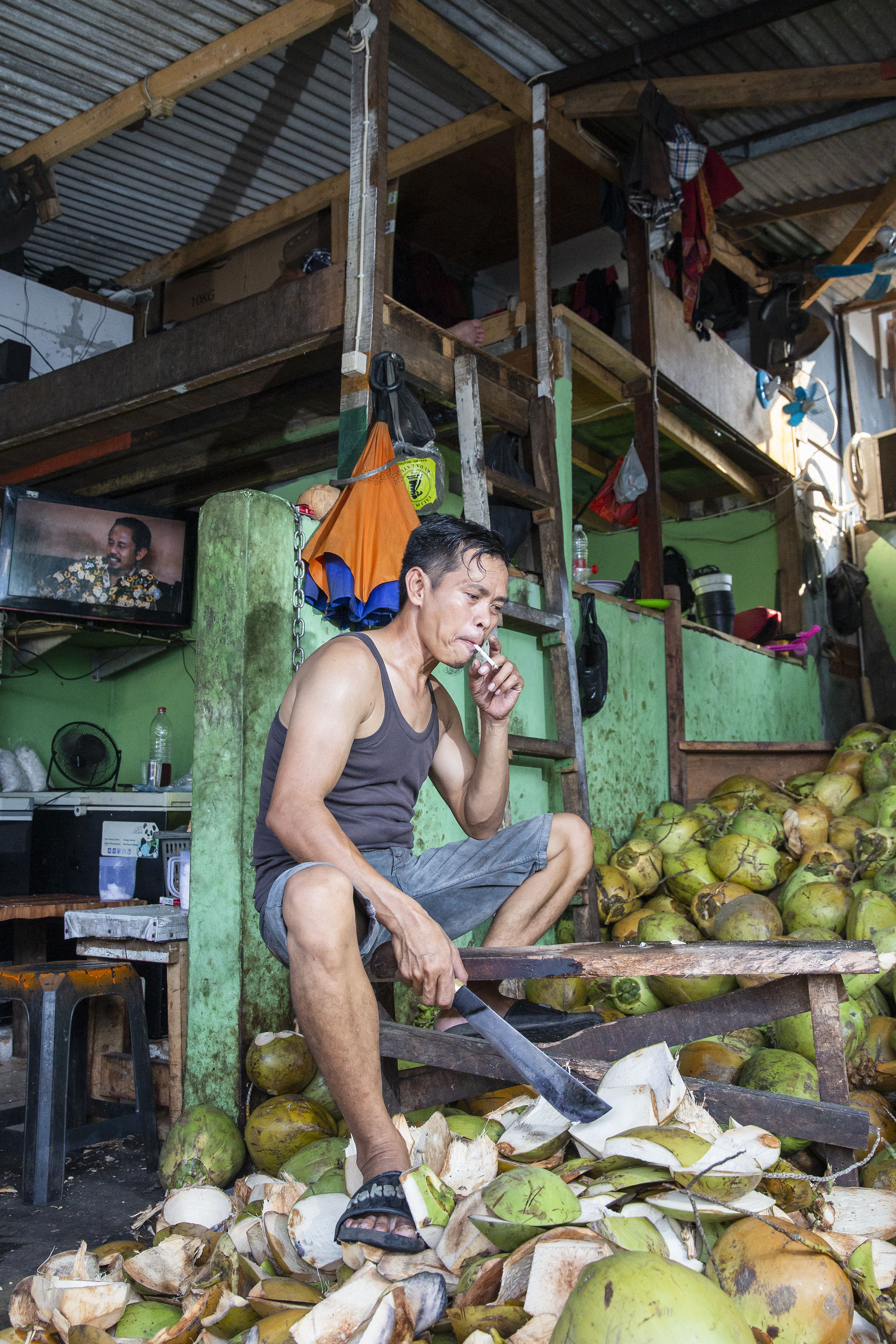
67% 30°C
A man takes a break from cutting coconuts at a market in the neighborhood of Kemayoran, in Jakarta. Indonesia, 2022
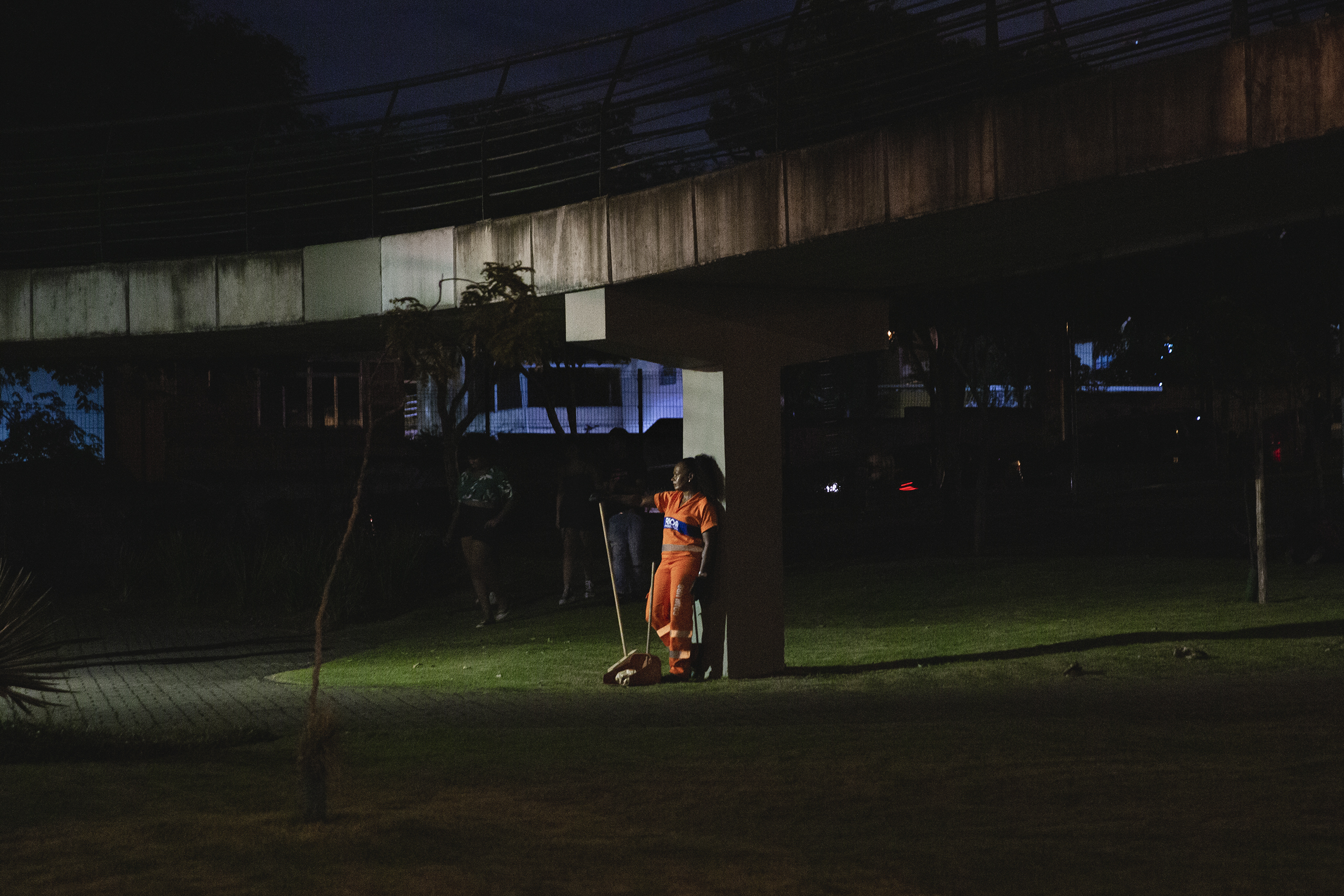
87% 24°C
A street cleaner takes a break in Parque de Madureira, on the outskirts of Rio de Janeiro. In tropical countries, night shifts are very common among outdoor workers. Brazil, 2022
A household is considered to be in energy poverty if energy-related expenses exceed 10% of total income.
The notion of energy poverty was originally introduced in the United Kingdom in reference to the ability of households to keep their homes warm enough. Space cooling was not included, but new definitions of energy poverty are starting to pay more attention to the inability of households to afford adequate cooling, and AC is now attracting growing attention.
In this context, an additional cooling poverty indicator more relevant for developed regions, is the amount of income spent on AC electricity by rich and poor people. Lorenza Campagnolo, researcher in climate economics, reports that poor people tend to spend a larger share of their budget on AC electricity expenditure. Among the poorest groups, this share on average, ranges between 5% in Indonesia and 10% in Brazil, while it is around 4% in Italy.
Rising energy prices will contribute to exacerbating energy and cooling poverty, and this increase may be amplified by high rates of AC use. Electricity prices will rise throughout the century because of adaptation to climate change, by around 2% to 6%. The actual and potential demand for AC can be interpreted in a broader sense, as a measurable proxy of the needs for improved thermal comfort.
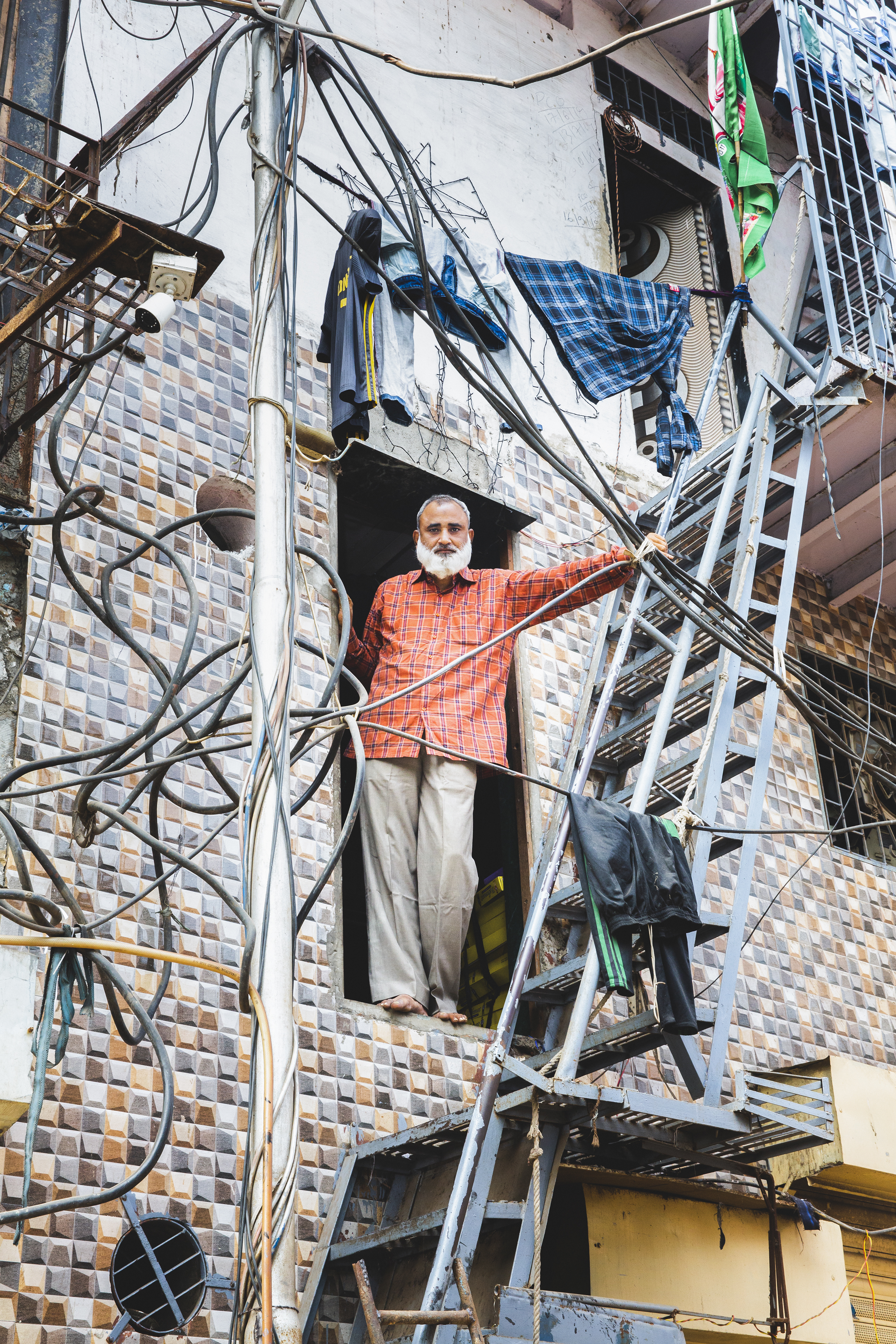
63% 30°C
A man gazes across tangled cables diverting electricity from the main grid, in the slum of Dharavi, Mumbai. India, 2019
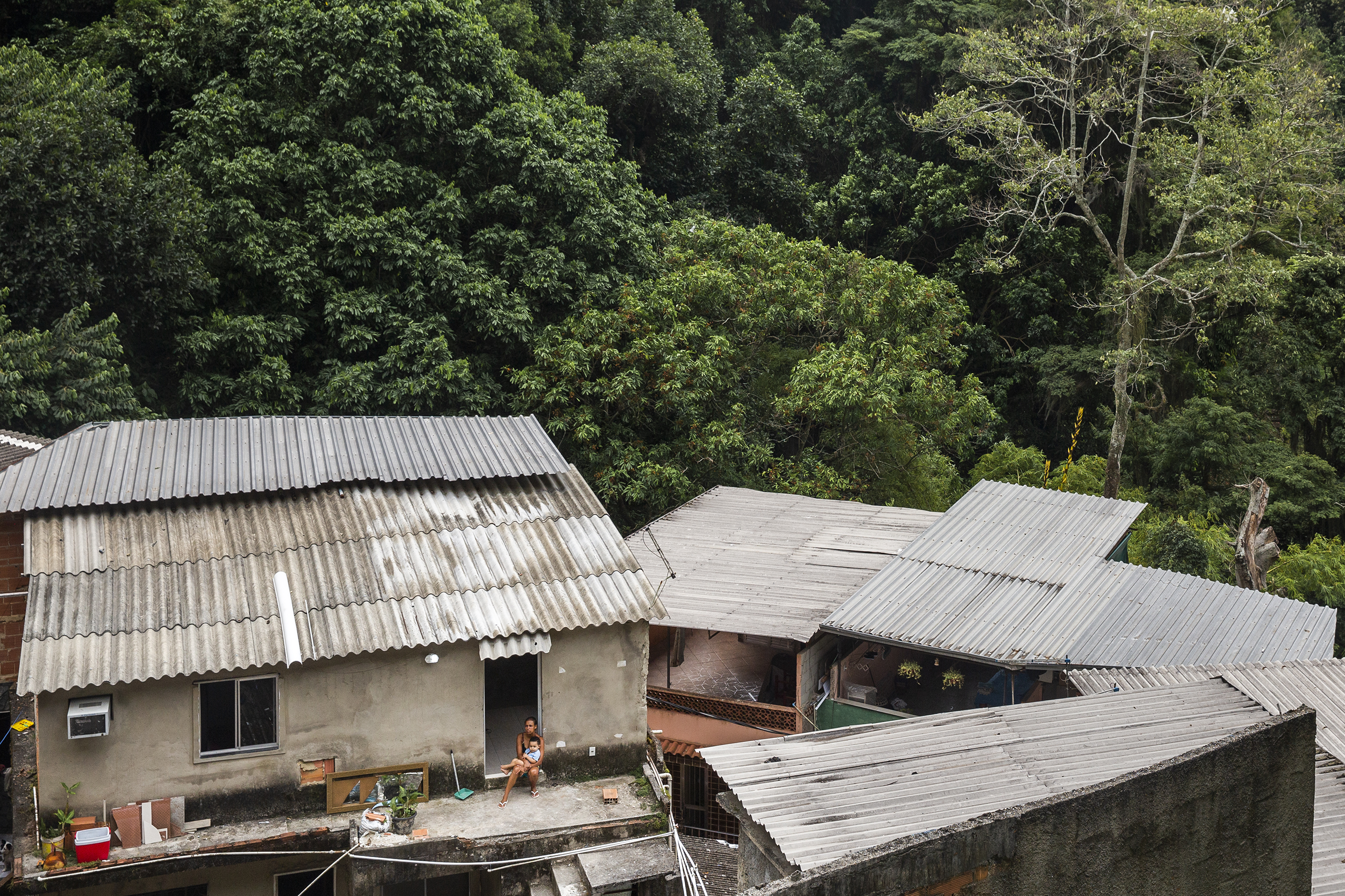
72% 29°C
A woman and her child sit outside of a house with a metal plate roof in the neighborhood of Cosme Velho in Rio de Janeiro. Brazil, 2022
Anna Gabriela Patrocinio Gregório, 24, her daughters Lara, 8, and Sãnella, 5, pose for a portrait at their home in a favela located in Santa Teresa neighborhood in Rio de Janeiro. Anna Gabriela inherited the house from her father, who built it from scratch. The house has just three little rooms with no windows and is kept ventilated thanks to two fans, which they always use to fight the heat. It is especially daunting during the night, she says. When she was pregnant with Sãnella, she remembers often being at the point of fainting because of the heat. Along with using fans, the family take showers and drink a lot of water to fight the heat. “Our main problem however is the running water we drink and we use to keep cool. My kids and I often get stomach sickness because of it”.
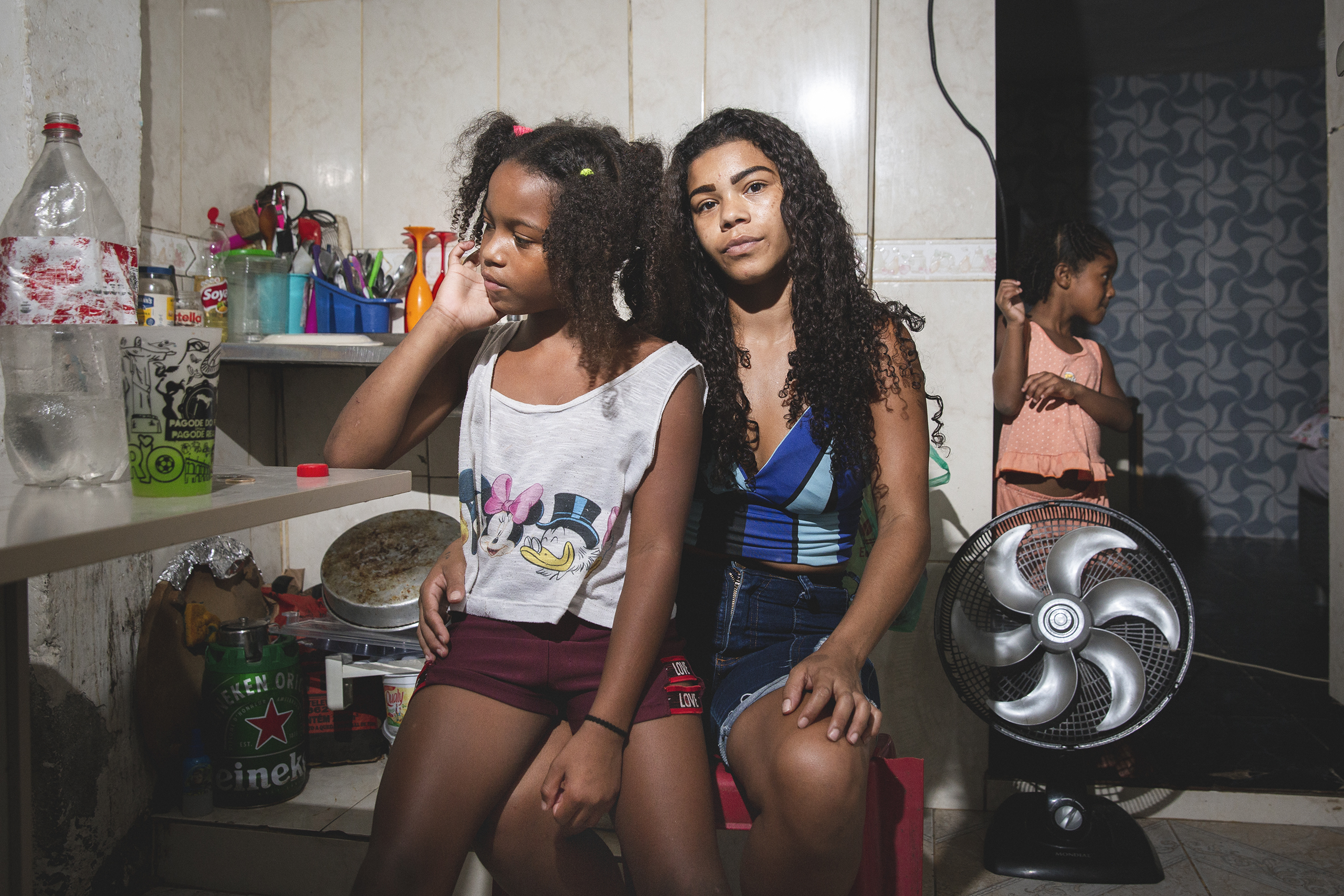
Anna, Lara and Sãnella, Brazil
50% 32°C
Karen Ramos Sartori, 45, and Micheli Sartori, 52, both born with severe handicaps, pose for a portrait in their home in Fazenda Botafogo, a lower middle class, peripheral neighborhood north of Rio de Janeiro. Micheli used to be a paralympic ping-pong athlete and a commercial intermediary. Now, neither of them work and they live off a small pension with their two kids. To fight the heat in the hotter months, they usually rely on a fan running all day, fresh food and fruit, water, and ice creams. Micheli adds: “It has always been hot in this region, but we used to have some relief at night, now this is no longer true. About 10 years ago I began sweating at night because of the heat, and now it’s unbearable without AC. We have it only in our bedroom, and we use it only at night. Even so, during the summer the costs of the electricity bill rises, reaching 600 reais (108 euro), which represents approximately 40% of my overall monthly budget".
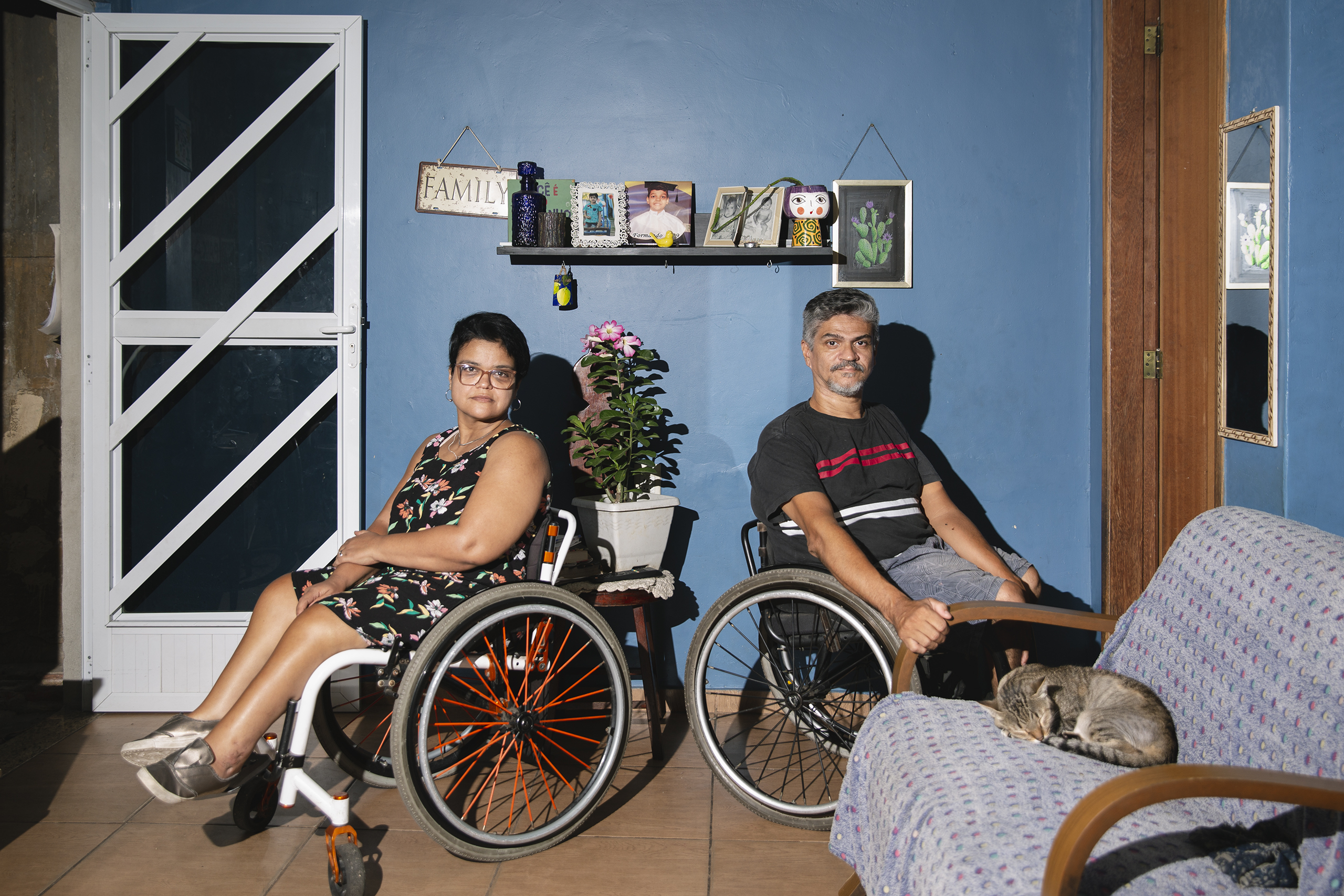
Karen and Micheli, Brazil
61% 30°C
Heat stress places a high burden on workers without means for cooling, such as those too poor to afford it and those working outdoors in agriculture or construction.
Heat affects labor in multiple ways, with predominantly negative impacts on workers’ health and productivity that are heterogeneous across regions and sectors. Heat impacts on labor can be measured in terms of person-hours offered, but also in terms of productivity and ability to perform a given task, because workers slow down and take more breaks, or simply because cognitive functions are also affected.
The negative impacts of warming are already visible in most parts of the world and those impacts can reduce the number of hours worked as well as the output delivered during these working hours and labor capacity. Heat stress places a higher burden on outdoor workers in the agriculture and construction sector, but also on indoor manual and manufacturing workers. The geographic areas at highest risk include parts of sub-Saharan Africa, South Asia and South-East Asia.
In several regions, also in temperate countries, maximum temperatures are hitting values to which it may be impossible to adapt. These hard limits to adaptation may be reached for rural and urban outdoor workers towards the end of the century. Labor productivity increases with low temperatures, but up to a certain point or threshold, and then it declines. The range of temperature levels that can support increasing labor productivity is much wider in Africa, Asia, and in the Americas with a range between 21 and 25 degrees Celsius. In Europe, however, labor productivity begins to decline at the much lower temperature levels, around 14 degrees Celsius.
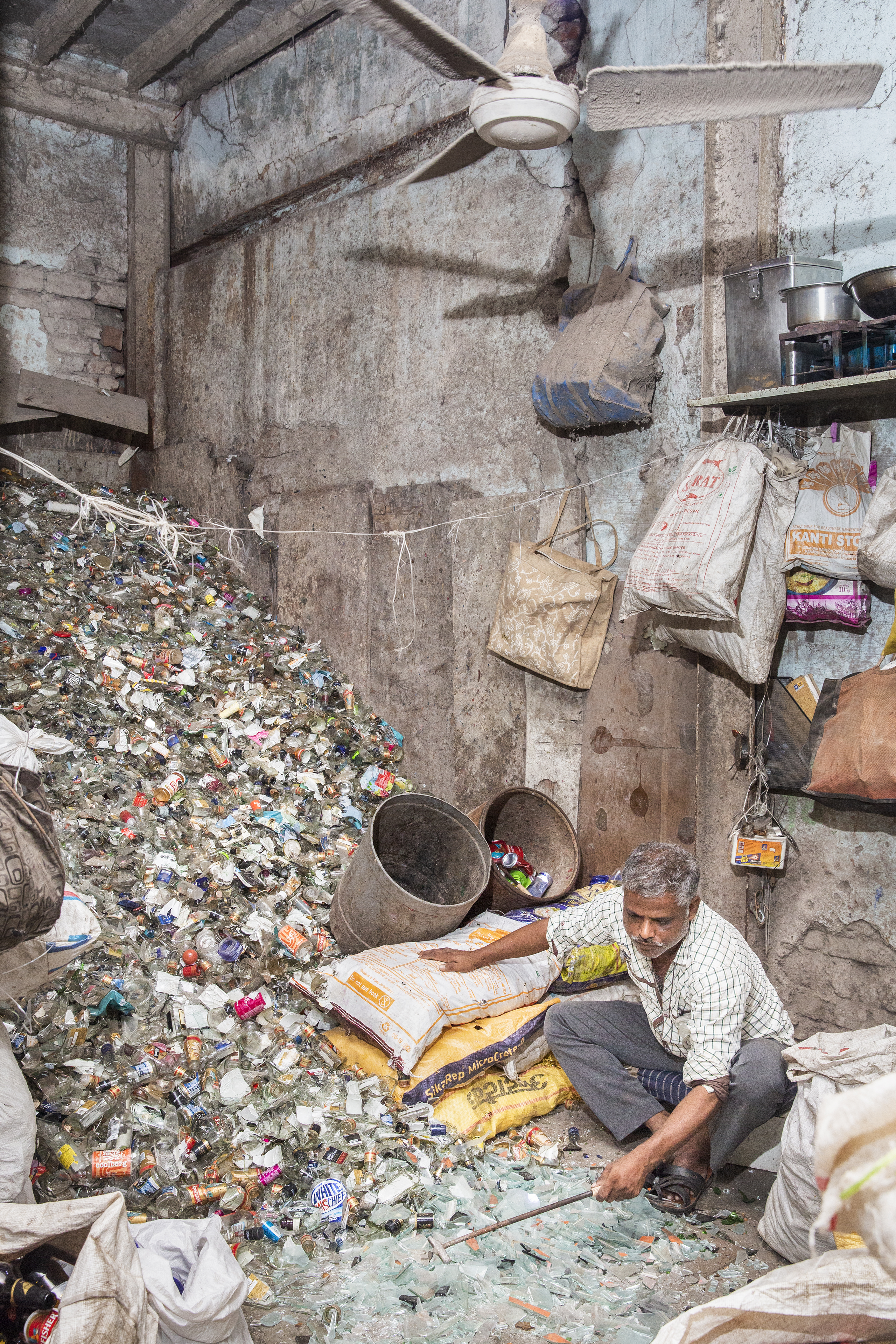
63% 30°C
A man works at a glass recycling facility in the slum of Dharavi, Mumbai. In India, fans are usually purchased before refrigerators are. India, 2019
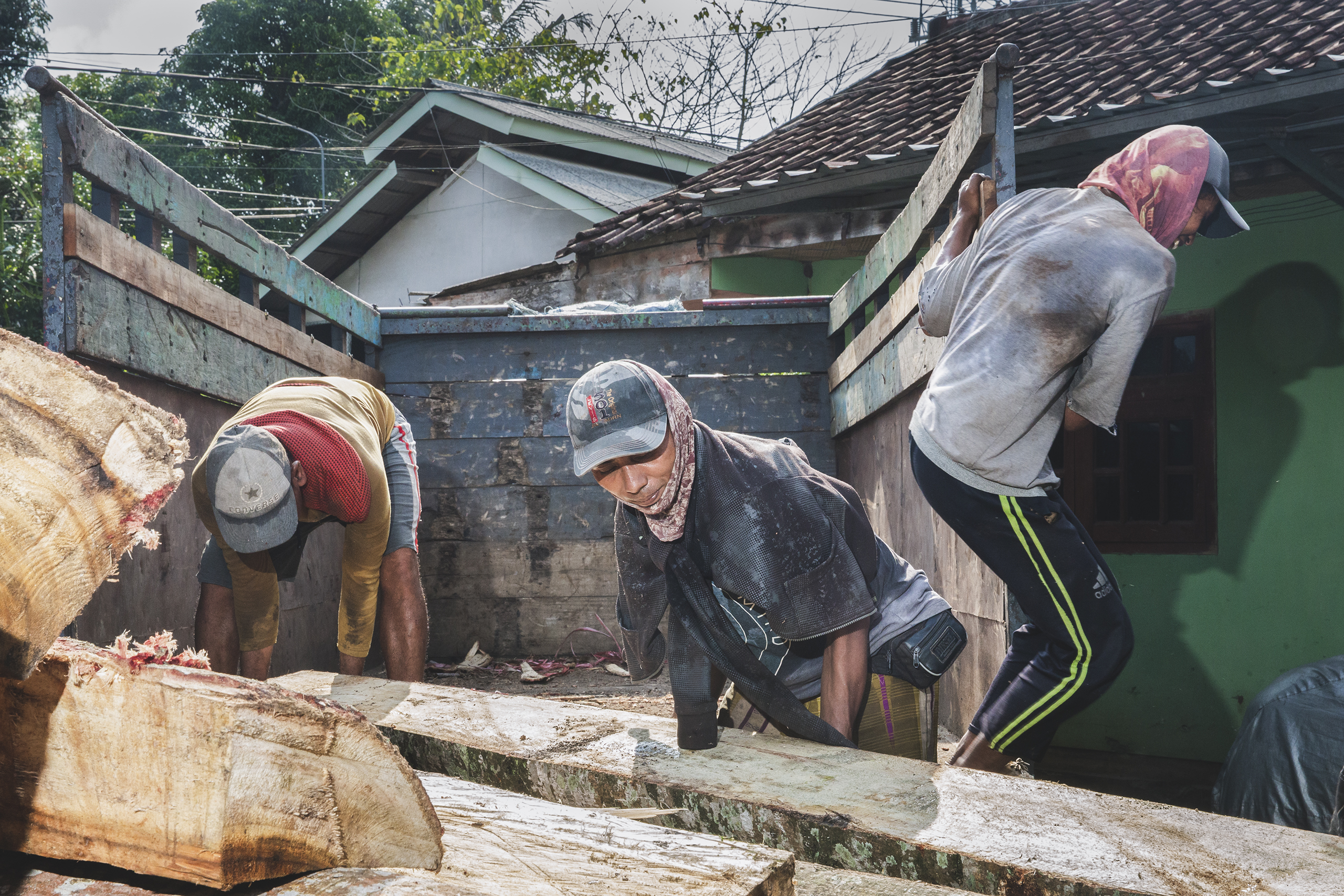
87% 25°C
Workers unload wood for construction at a carpenter's shop near the city of Bondowoso on the island of Java. Indonesia, 2022
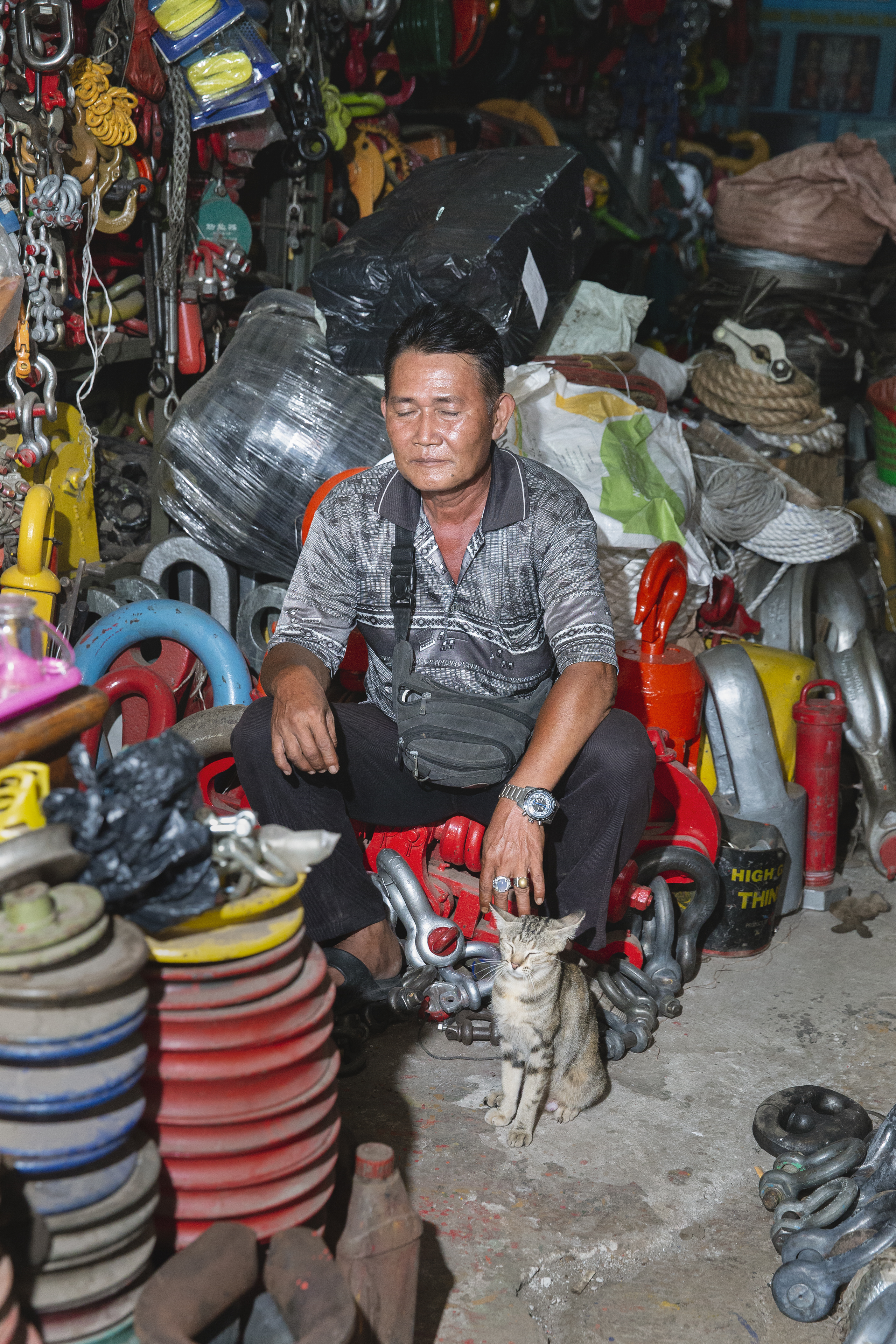
65% 31°C
A workshop worker rests in the heat close to the Port of Tanjung Priok, Jakarta. Indonesia, 2022
63% 30°C
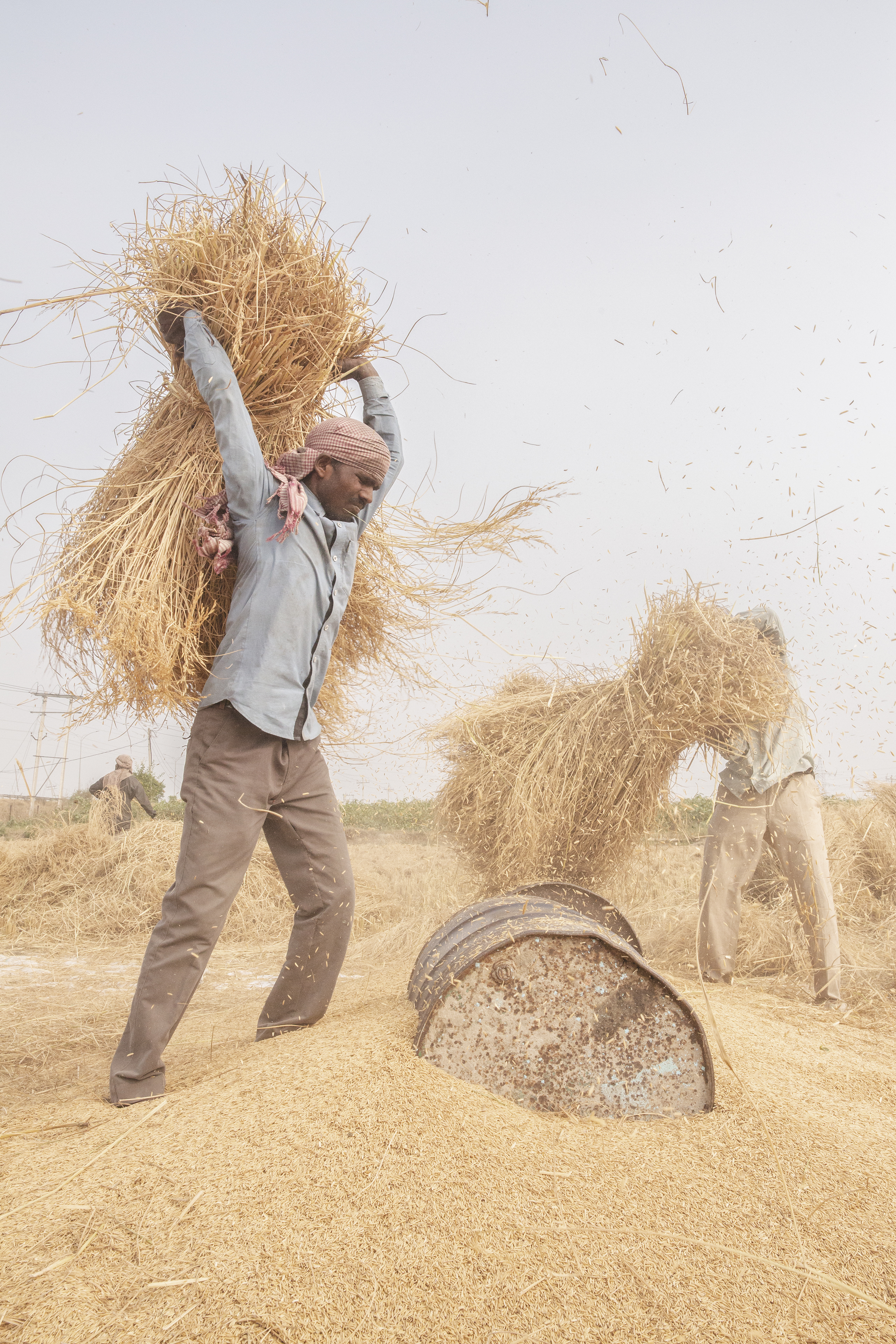
Haryana, a northern region in India, is one of the country's main producers of rice, with around 4.5 million metric tons annually. The vast majority of farmers burn crop residues at the end of the season, which results in major air quality issues for nearby Delhi. PM10, PM2.5, NO2 and SO2 emitted during Haryana's burning season lead pollutant concentrations in Delhi to regularly exceed international standards by over 100%.
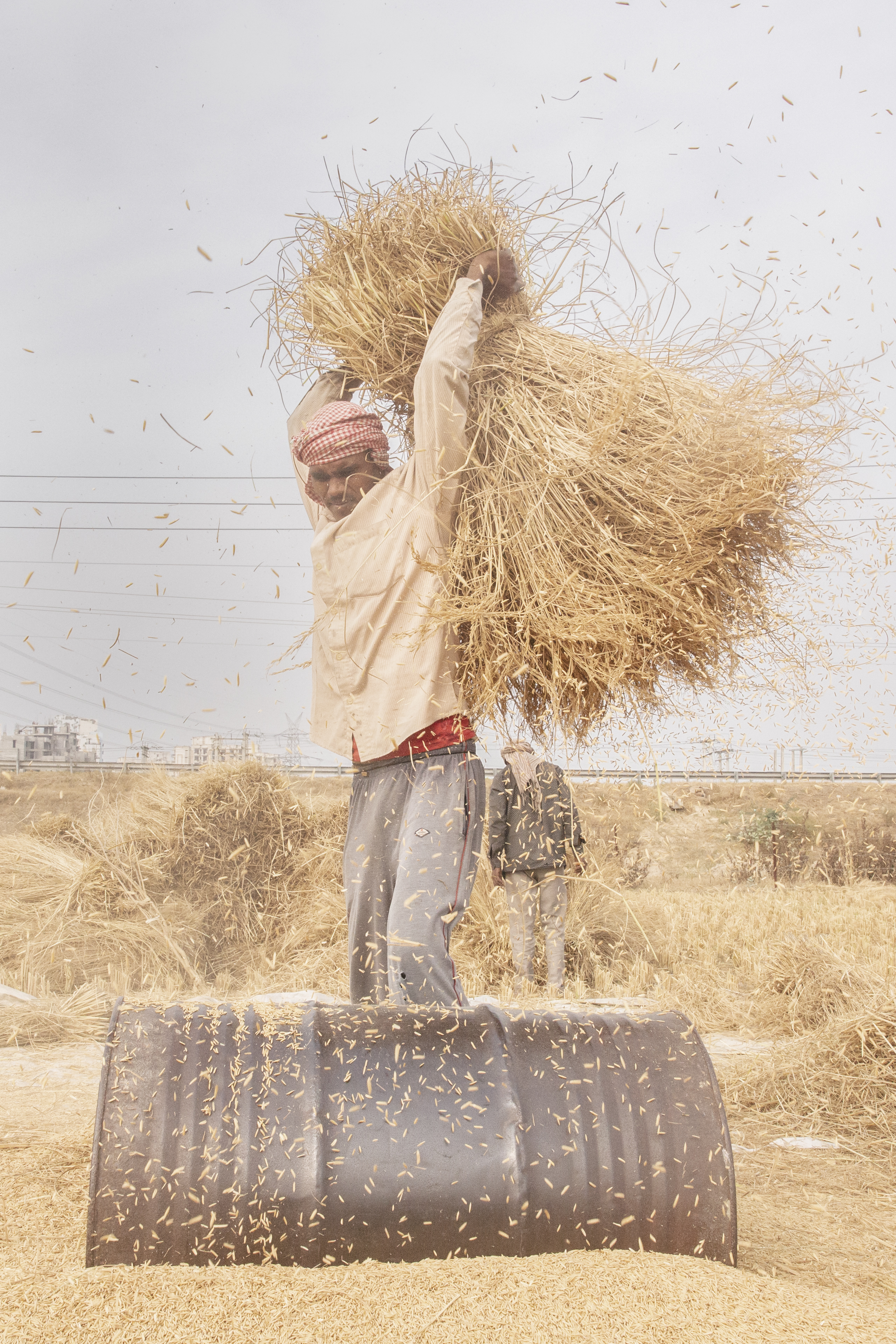

95% 22°C
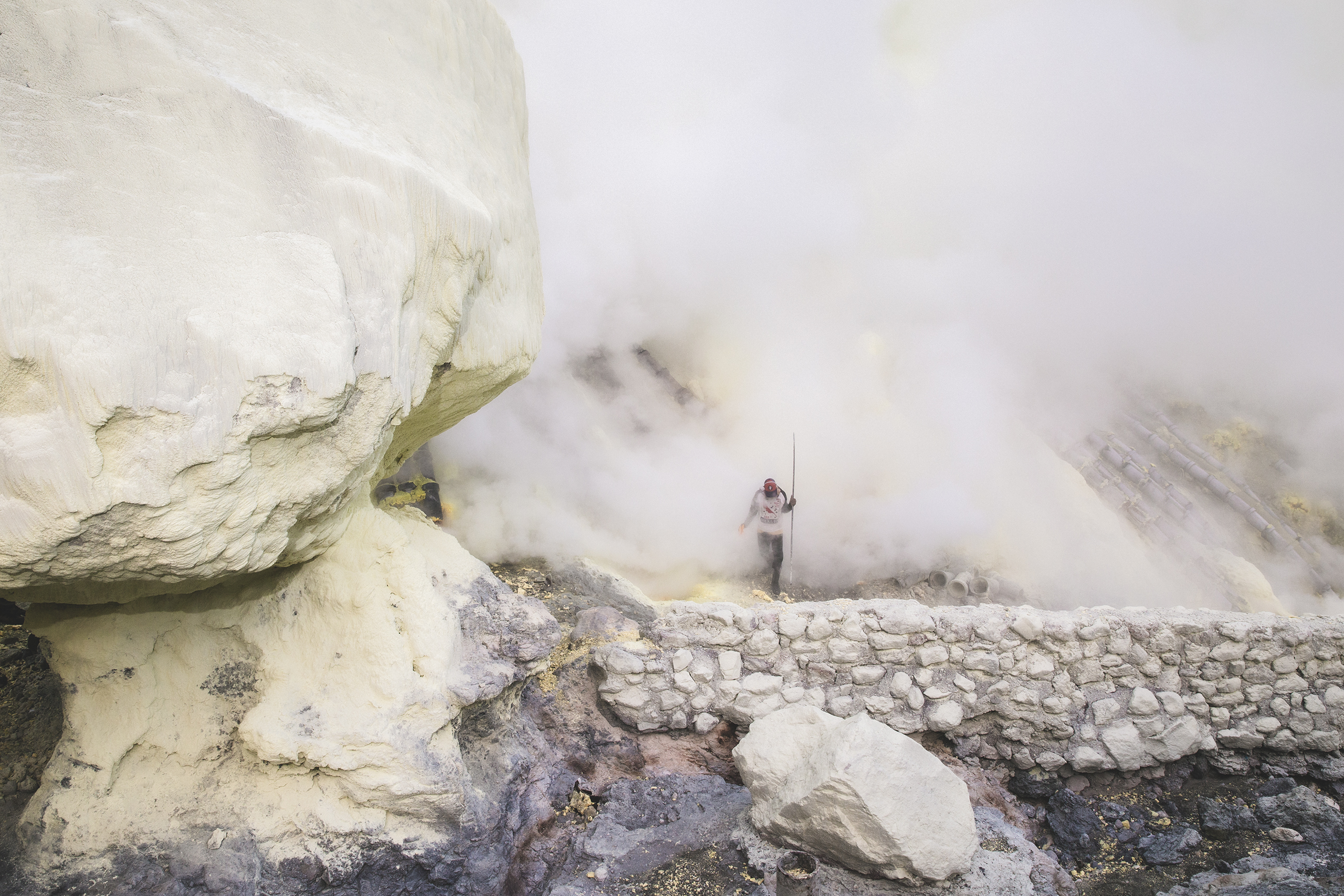
Ijen, in eastern Java, Indonesia, is the one of the few places in the world where sulfur mining is still done by hand. Inside the caldera of this active volcano, the molten sulfur is tapped from inside the rock using metal pipes to bring it to the surface and cool into a hard, yellow stone. The miners call it ‘Devil’s gold’, because those who rely on it for a decent wage pay a heavy price with their health, and sometimes with their life. These miners normally work at night to avoid the heat of the day, a habit many outside workers in tropical countries may need to adopt in the near future.
